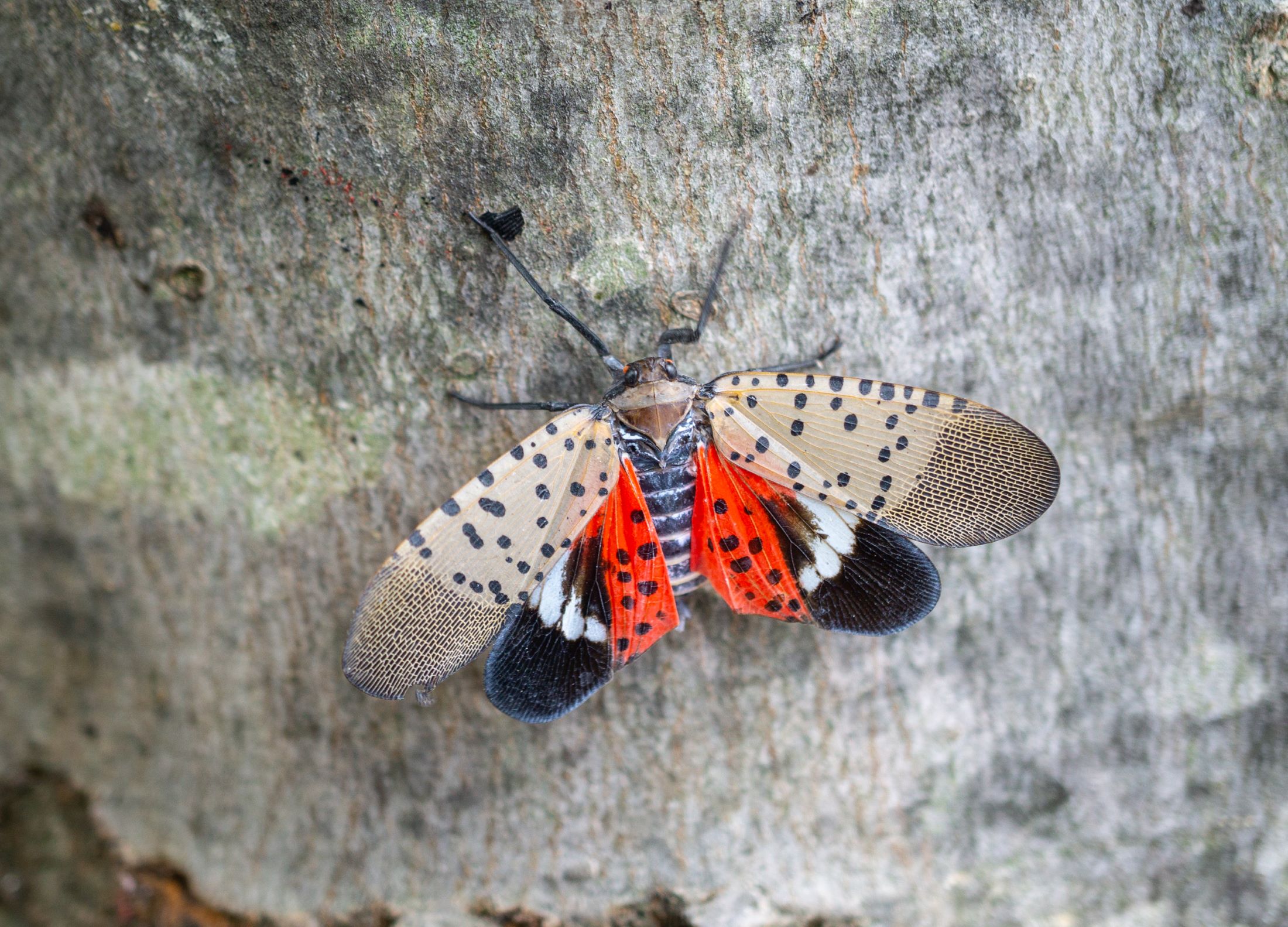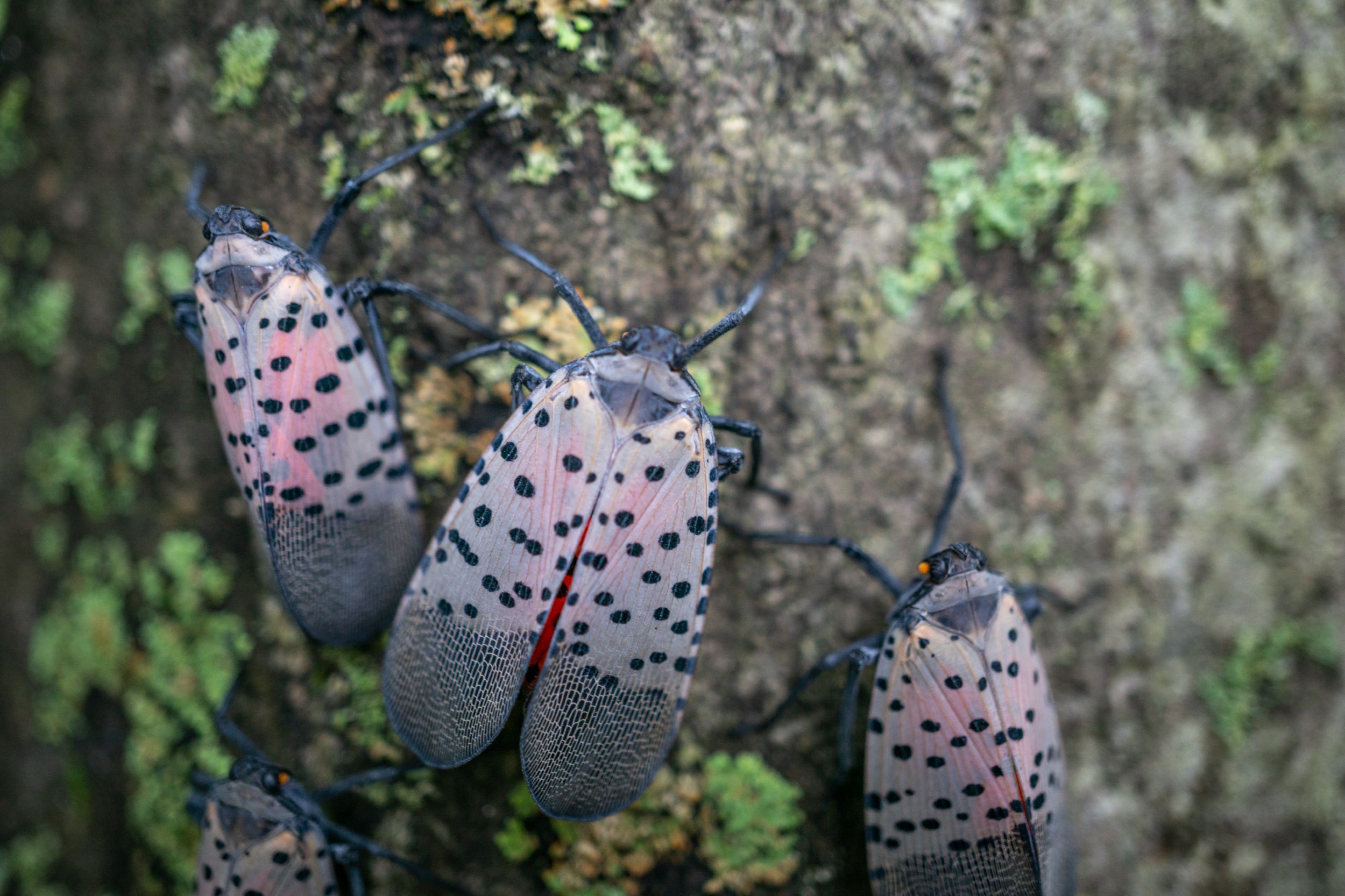Managing Spotted Lanternfly Infestations in Connecticut: A Guide to Integrated Pest Management

The Spotted Lanternfly is an invasive insect native to China, India, and Vietnam. It was first discovered in the United States in Berks County, Pennsylvania, in 2014. This insect has the potential to significantly impact crops such as grapes, fruit trees, and hardwoods. It is essential to be vigilant and take measures to prevent the spread of this destructive pest.
Adult lanternflies are approximately one inch long and half an inch wide, with grayish forewings with black spots. The bright red hind wings with black spots are revealed when the wings are spread. Nymphs are black with white spots and turn red before becoming adults.
The Threat of the Spotted Lanternfly in Connecticut
The Spotted Lanternfly poses a significant threat to the environment and agriculture in Connecticut. It feeds on more than 70 plant species, including economically important crops such as grapes, apples, and hops, which can lead to significant agricultural and economic losses.
Furthermore, the honeydew excreted by the lanternflies promotes the growth of sooty mold, which can further harm plants and agricultural productivity.
Additionally, the infestation of Spotted Lanternflies can disrupt ecosystems by outcompeting and displacing native species. Efforts to monitor, control, and mitigate the impact of this invasive species are crucial to safeguarding Connecticut’s natural environment and agricultural industry.
Combating Spotted Lanternfly in Connecticut Using Integrated Pest Management (IPM)
Integrated Pest Management (IPM) is not just a single solution but a comprehensive and environmentally sensitive approach to addressing the threat of Spotted Lanternflies in Connecticut. Integrating various control strategies provides a customized and effective solution tailored to our state’s unique environment, giving us a strong and adaptable defense against this invasive species.
In Connecticut, adopting an IPM approach considers the diverse agricultural and natural landscapes and the potential impact on non-target organisms. Understanding the specific challenges posed by the Spotted Lanternfly in our state allows us to develop targeted and sustainable management practices.
The benefits of choosing IPM over traditional pest control methods in Connecticut are immediate and long-term. By minimizing the reliance on chemical pesticides, promoting ecological balance, and reducing the risk of pesticide resistance, IPM offers a sustainable solution to controlling the spread of Spotted Lanternflies while minimizing environmental impact. It’s a step towards a healthier and more balanced ecosystem.
Our IPM Approach to Removing Spotted Lanternflies

At Andrews Arboriculture, a leading provider of eco-friendly solutions for managing the threat of Spotted Lanternflies in Connecticut, we are committed to Integrated Pest Management (IPM). Our team of experienced professionals is dedicated to protecting your landscape from the destructive impacts of the Spotted Lanternfly.
Early Detection and Prevention: We conduct regular surveys to detect signs of Spotted Lanternfly activity early and prioritize strategic planning and early intervention to prevent infestations.
Effective Control: If Spotted Lanternfly populations become unacceptable, we use the most effective and least disruptive treatment strategies, including approved organic or conventional pesticides applied in an environmentally friendly manner.
Continuous Oversight: Our management services include constant monitoring of the effectiveness of our interventions. This involves regular inspections and assessments to ensure your landscape remains healthy and free from the threat of Spotted Lanternflies throughout changing seasons and evolving pest challenges.
The threat posed by the Spotted Lanternfly to Connecticut’s environment and agricultural industry demands proactive and sustainable management solutions. Our commitment to Integrated Pest Management (IPM) means we are ready to assist in combating the spread of this destructive pest. By prioritizing early detection, effective control strategies, and continuous oversight, we aim to safeguard your landscape from the impacts of the Spotted Lanternfly while minimizing environmental disruption.
Join us in this crucial effort by scheduling a free property assessment. Simply visit our website or give us a call to arrange a convenient time for our team to visit your property. Contact us today to take the first step towards protecting our environment and agricultural resources.





